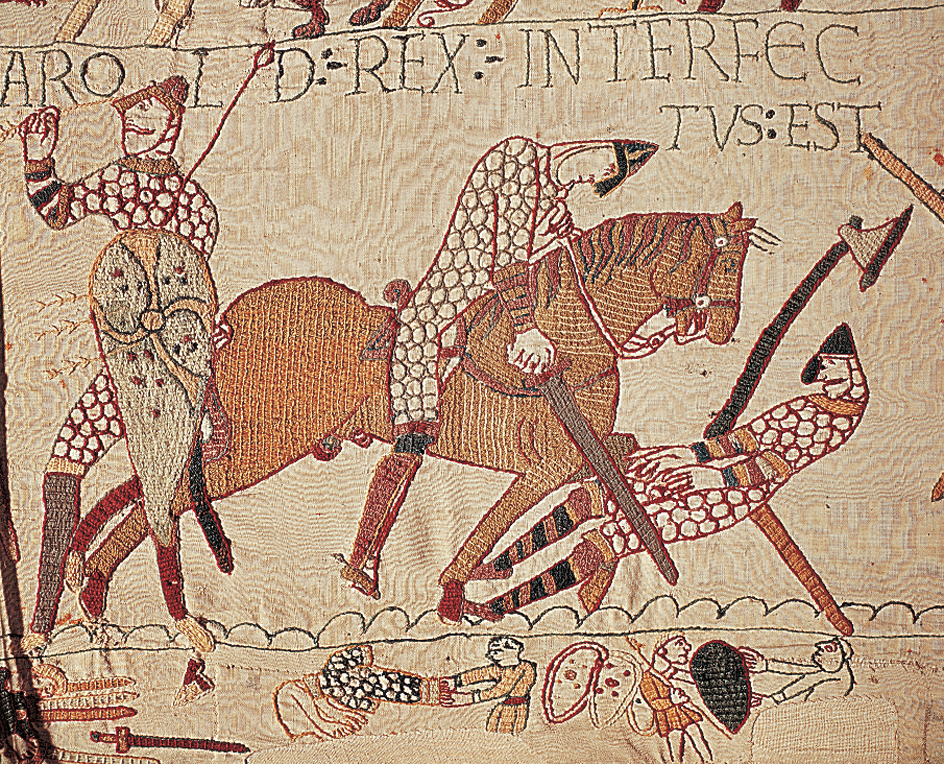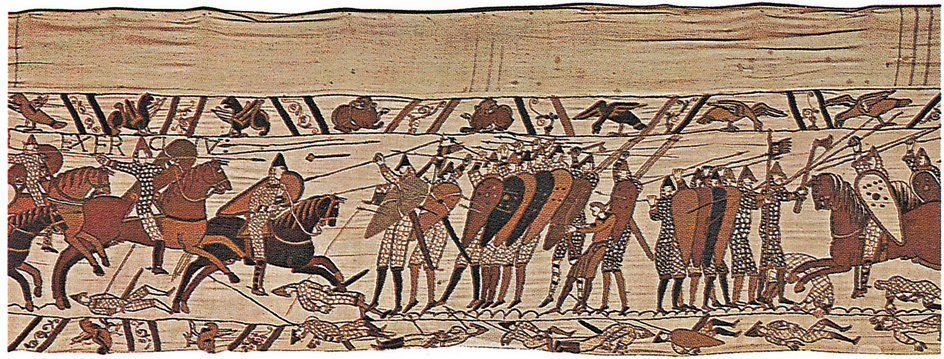Tapestry is a woven fabric made from threads of different colors to form a picture or design. Most tapestries serve as indoor wallhangings.

How tapestries are made.
Tapestries are woven on a loom. Like other woven fabrics, tapestries consist of vertical threads, which make up the warp, and horizontal threads, which form the weft. A weaver winds the threads of the weft over and under the threads of the warp, which are attached to the loom. In ordinary woven cloth, the warp and the weft can both be seen. But in tapestry cloth, the weft completely covers the warp.
A tapestry weaver works from the back of the tapestry and follows a pattern called the cartoon, which indicates the design and thread colors. When the tapestry is finished, its design is the reverse of the cartoon. Linen and wool have been the most common materials, along with gold and silver thread.
History.
Tapestry is one of the oldest techniques in textile art. It probably originated in prehistoric times, but the oldest surviving cloth fragments and written accounts date from about 1500 B.C. They come from many parts of the ancient world, including Egypt, Babylonia, China, and Peru.
Tapestry flourished in Europe in the Middle Ages, especially from the 1300’s to the 1500’s. Professional workshops produced sets for castles and churches. Most weavers worked from a full-scale cartoon painted by another artist. Because most tapestries were wool, they helped insulate rooms as well as decorate them. Kings and nobles took tapestries with them when they traveled to create attractive and familiar surroundings, and sometimes hung them in their tents on the battlefield.

Paris became the first major tapestry-making center in Europe. The Apocalypse of Angers, one of the oldest sets of tapestries in existence, was produced there during the 1370’s or 1380’s. During the 1400’s, Arras in France, and Brussels and Tournai in Belgium, became famous tapestry-making centers.
Most tapestries from the Middle Ages depict scenes from history, mythology, the Bible, or daily life. Many have a millefleurs design as background. Millefleurs is a French word that means a thousand flowers. The design consists of flowers and leaves in realistic detail scattered over a background, making the picture seem flat like the wall it decorates. One famous set is called The Lady with the Unicorn.
In the early 1500’s, the Italian painter Raphael designed cartoons for a set of tapestries called the Acts of the Apostles. They looked like paintings with figures standing in a three-dimensional space. Their realistic compositions greatly influenced tapestry design.
Tapestry weaving continued to thrive in Europe during the 1600’s and 1700’s. The Gobelin factory in Paris was one of the most famous centers. Such famous artists as Peter Paul Rubens, Francois Boucher, and Francisco Goya designed cartoons for various factories.
The popularity of tapestry declined during the 1800’s, when wallpaper became widely used in homes. The Industrial Revolution also contributed to its disappearance. In the late 1800’s, the Englishman William Morris founded the Arts and Crafts movement to revive the handicrafts displaced by the machine. He also rediscovered handweaving and dyeing techniques of the Middle Ages. Morris greatly influenced artists of the 1900’s.
In the early 1900’s, French artist Jean Lurcat introduced the use of modern artists’ designs at Aubusson, France, a tapestry center important since the Middle Ages. A modern crafts revival occurred after the end of World War II in 1945. Since the 1950’s, artists have experimented with materials and weaving to create many new forms of wall tapestry.
